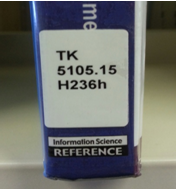Today, I went to Business Library (BUSL)
with one of the Student Assistants to change the call number of some books. This
library is spacious and comfortable with good interior design. It also has a
large collection of books, journals, and audio-visual materials. In addition,
it provides excellent facilities and services to the students.
The
diagram above shows how the Student Assistant changes the call numbers of the
books.
Procedures
of Changing Call Number
1. Print out the new call number labels and Metadata record of books
2. Check the ID number of book
2.
4. Erase the previous call number and write down the new call number on first page of the book.
4.
5. Remove the previous call number label on book spine and replace it with new one
6. Cover the new call number by using transparent sheet
6.
7. Cross out the books in which the call number have been changed
8.Arrange the books back to their respective shelves according to the new call number
8.




.jpg)

















